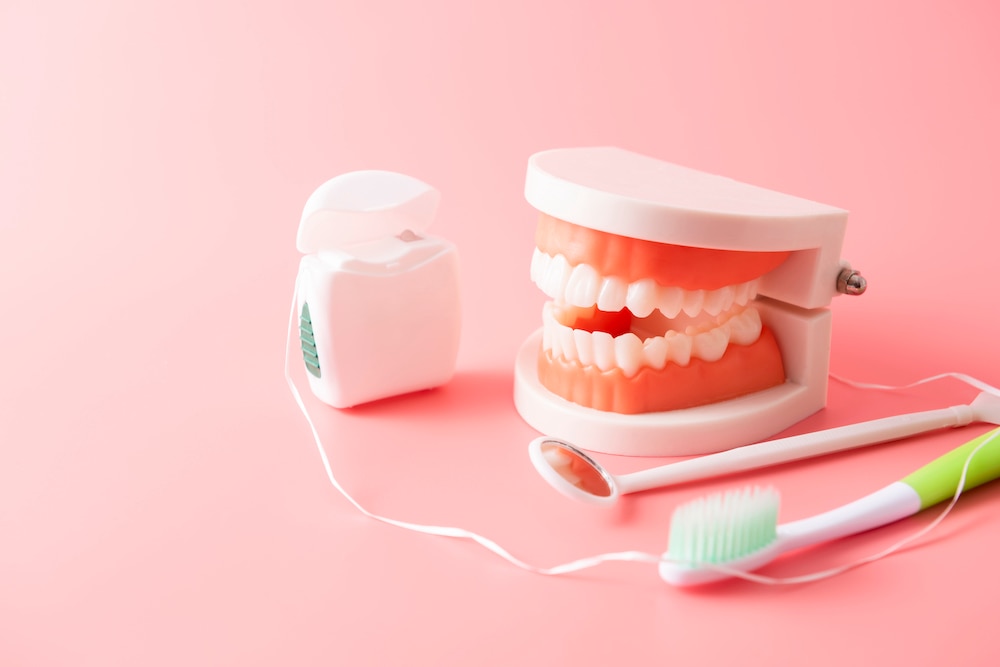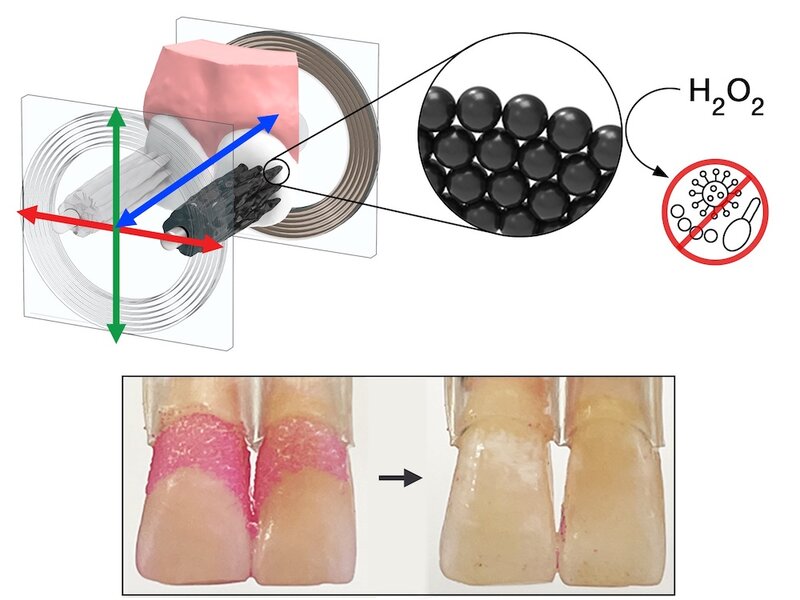Create a free profile to get unlimited access to exclusive videos, sweepstakes, and more!
A swarm of microrobots could brush and floss your teeth for you
If only they could fold laundry, too.

In pop culture stories, robots often develop complex interpersonal lives with feelings and experiences not unlike our own. In the future, they might even build their own families and invent their own machines like the characters in the appropriately named animated movie Robots. One thing they’ll likely never have to do is worry about oral hygiene, but that doesn’t mean they can’t be good at it. In fact, they might be better at cleaning our teeth than we will ever be.
Edward Steager and Hyun Koo, both working in the Biofilm Research Laboratories at the University of Pennsylvania, have teamed up to create what might be the future of at-home dental care. The results of their work were recently published in the journal ACS Nano.
Steager is a roboticist and Koo is a dentist, they’re not the most obvious of laboratory fellows, but they came together because of a shared interest in robotic nanoparticles. “I work on small-scale robotics and happened to be using the same kind of nanoparticles Dr. Koo was using for a different purpose. I wasn’t looking to brush teeth at all, but I was really interested in the application space between biology and small-scale robotics,” Steager told SYFY WIRE.
Together, they’re using iron-oxide nanoparticles in hopes of reimagining an ordinary part of our lives which hasn’t changed in centuries. The toothbrush has been in use for roughly 5,000 years and it has changed very little in that time. The first bristle brushes are believed to have been invented by the Chinese in the 15th century and before that people chewed on sticks with frayed ends to achieve much the same result. Oral hygiene is one of the most important pieces of daily healthcare, and it’s reliant on technology which hasn’t really changed since before we figured out that the Earth orbits the Sun.
“It’s not very effective and the whole technology has not been disrupted in decades. The introduction of motors and electrical toothbrushes were the biggest innovations, and it still didn’t change the fundamentals of oral care. You still need to use your hand to brush your teeth, floss your teeth, and rinse your mouth. It’s a multi-step, cumbersome process,” Koo said.
Switching from bristle brushes to robotic nanoparticles is an oral hygiene innovation thousands of years in the making. It takes manual control out of the equation entirely and relies on magnetic field reactions to manipulate groupings of tiny iron-oxide beads over the surface of your teeth. Researchers believe the technology could not only simplify tooth care for everyone, but would be of particular use to individuals with limited dexterity who currently struggle with the manual process of teeth cleaning.
In laboratory tests, the team used 3D models of teeth as well as actual human teeth which had been removed from the body to test the efficacy of their system. At present, that means placing the teeth into a fluid chamber filled with nanoparticles, but in the future, it would involve a device placed inside the mouth.
“These nanoparticles are magnetic, and we control the dance of the particles together. We can change the shape and move them in two ways. One is by changing the magnetic fields with electromagnets, and the other is by moving a portion of the coils left, right, up, and down. Between those two methods you can cover all the spaces,” Steager said.
When the magnetic field is introduced, the beads adhere to one another and form bristles or strings. The bristle formations are effective at removing plaque from the surface of teeth while the strings behave much like conventional floss. What’s more, the nanoparticles behave like an enzyme to activate small amounts of hydrogen peroxide which serve as an antimicrobial.
“The beauty of these bristles is they can adjust to different topographies, angles, and geometries. Sometimes teeth are crooked or misaligned and the advantage of this system is it will reach all the nooks and crannies to remove plaque from those surfaces,” Koo said.
It could even work well for individuals with braces or other dental obstacles. Steager suspects their robotic system would clean around braces much better than a traditional bristle brush ever could. However, the material of the braces is a concern. Introducing a nanorobotic swarm and magnetic fields to a mouth full of metal would be a recipe for disaster. It would only be suitable for braces made of ceramic or other nonreactive materials.
In addition to keeping your teeth clean, the nanorobotic system could also act as an early warning system for your health, telling you when you need to go to the dentist and when your oral health might be impacting your overall health. It could achieve this through sampling your plaque as it’s cleaning your teeth and giving you information about what it finds.
“Oral health is systemic health. From the microbiome to bugs in the mouth contributing to your overall health, having a system that can effectively make sure the oral cavity is in good health has a huge impact,” Koo said.
One of the major hurdles which still remains is the form factor the technology will ultimately take once it hits store shelves. Consumers might be resistant to putting a whole bunch of tiny robots in their mouths unless they’re certain they can get them back out again.
Steager and Koo wanted to leave some of that to the imagination for now. The specifics of their future designs are in development but under wraps. They were willing to say that it would fit inside the mouth and be automated, requiring no active control from the user. Wherever they land, we welcome any innovation which makes brushing and flossing less of a kick in the teeth.



























